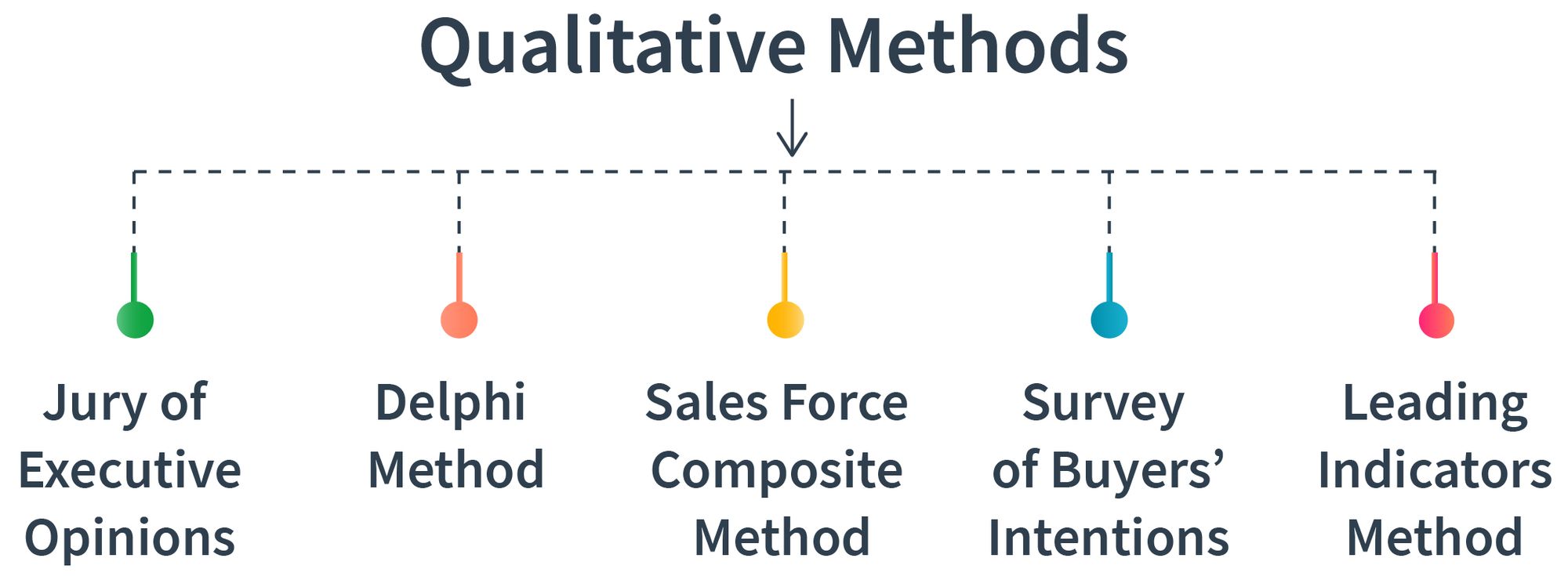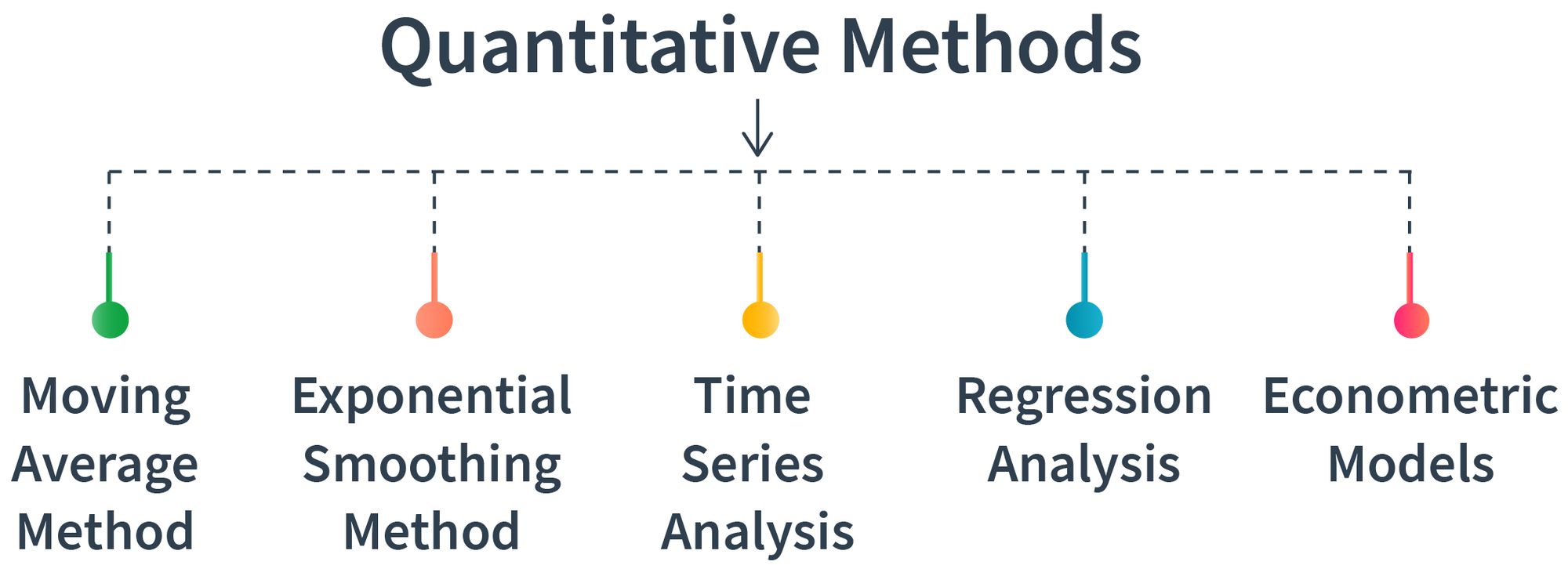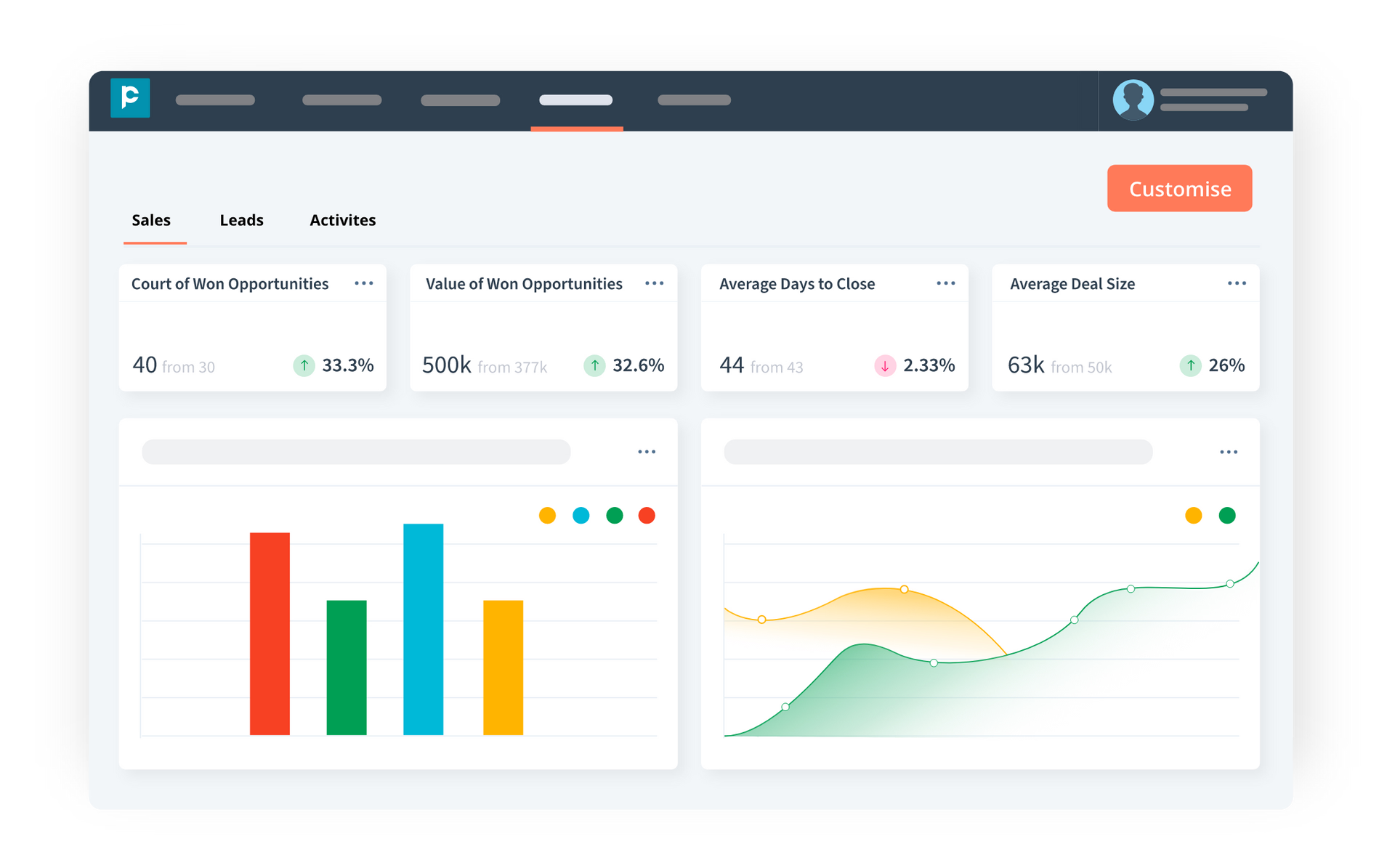How to forecast sales: Methods and best practices
Sales forecasting is the process of predicting the future revenue of your business. Learn how to create accurate sales forecasting in this blog.

Wouldn’t it be great if you could predict the future and backtrack the results to improve your performance?
While that sounds like a whim, it is possible to project the sales of your business through various methods of sales forecasting.
Accurate forecasting of your sales, in turn, can help you make smarter and tactical decisions for your business growth.
But, what is sales forecasting and how can you use it to benefit your business? We will help you dig deeper into it.
This blog will help you understand:
- What is sales forecasting?
- Why should you forecast the sales?
- Factors to consider when forecasting sales
- How to forecast sales?
- Qualitative and Quantitative methods of sales forecasting
- Frequently asked questions
What is sales forecasting?
Sales forecasting is the process of predicting the future revenue of your business by projecting the sales of your product or your services over a specified period. The time period can be either week, month, or year. In short, forecasting your sales helps you to determine how much revenue you can generate and the timeline for generating those sales.
In other words, sales forecasting is the prediction of how the market may respond to your company’s go-to-market efforts.
Why should you forecast the sales?
The importance of sales forecasting is hard to overstate. While it boosts confidence in your business, it also assists different departments of your organisation. Sales forecasting techniques also act as demand forecasting and budget forecasting techniques. For instance, the sales forecast helps determine the various demands and budgets of the company; the production department depends on the sales forecast to plan their product cycles; the sales and marketing department uses sales forecasts to devise sales strategies; and so on.
Sales forecasting can do wonders for your business. Here are a few benefits your business can enjoy when sales forecasting is done right.
Gauge demand for your products: Sales forecasting helps in deriving demand forecasts. In other words, it will help you understand which of your products or services can be in high demand and hence, helps you devise the sales, marketing and advertising strategies and maintain the inventory.
Growth planning: When you have a better understanding of your future possibilities, you can consciously make strategic moves that align with your business growth.
Process improvement: A sales forecast can create awareness about your sales team’s performance, help detect the leakage in your sales pipeline, and recognise the loopholes in your sales process. This further helps in determining the required improvements.
Spot the problems in advance: Sales forecasting helps in recognising the forthcoming problems and hence, assists in taking proactive steps to prevent avoidable disasters.
Now that you are aware of what sales forecasting is and the importance of sales forecasting, let’s go over the factors to consider when forecasting sales.
Factors to consider when forecasting sales
Sales forecasting is a science and here are the components that you need to consider while predicting your sales and revenue.
Sales forecasting is a science and here are the components that you need to consider while predicting your sales and revenue.
Past economic performance: The historical data of your business helps you determine how the business worked under different circumstances in the past and how it might perform if the same circumstances are about to repeat within the year. Thereby providing a more accurate forecast.
Internal organisational changes: Internal changes such as changes in the sales territory, size of your team, higher management, etc., can affect your business processes. As a result, changes within an organisation can create a certain level of unpredictability in investments. Hence, internal organisational changes should also be considered while forecasting your sales.
Changes in products or services: Whenever an organisation introduces a new revenue stream or rolls out new features, the changes might impact the sales forecast by either dipping the sales or speeding up the sales cycle.
Current global conditions: Apart from analysing how your organisation performed during different situations, it’s also important to consider global conditions such as war situations, political elections, etc. Because what happens in one corner of the world can directly or indirectly affect businesses across the world. Hence, your production level, marketing efforts, and pricing may vary according to the ongoing situations and sales forecasts will be adjusted accordingly.
Industry conditions: Industry conditions such as government policies, the growth rate in your industry, market share within the sector, etc., are likely to affect your sales. Consequently, the sales forecast needs to be adjusted.
Rate of inflation: Inflation can affect your business greatly but you would have minimal control over it. For the same reason, you may have to adjust your predictions accordingly.
Seasonal demands: Consider the periodic seasonal events and how it affects the demands of your offering. Forecasting demands properly can help you predict sales accurately.
How to forecast sales?
Did you know, 67 per cent of organisations don’t have a formalised approach to forecasting altogether?
This could certainly affect the businesses and could offer a competitive advantage to the competitors. To stop you from making such a mistake, we are providing you here with a step-by-step guide to forecast the sales of your company.

Identify the problem and set the goals
Remember, if you are trying to predict sales, your plan can’t be vague or generic. For a near-to-accurate forecast, you need to first figure out what problem you are trying to solve with the sales forecast and be aware of your target market, customer base, market responsiveness, and your competitors.
To give you an example, if you own a business that sells laptops, you shouldn’t forecast the sales for the entire organisation (too vague and too generic) at once or forecast for each type/configuration of the laptop (too specific and too many). Instead, you should focus on the brand of laptop or any other key categories of laptops.
When you divide, you would get clarity on your problem that needs to be solved and you can set a goal accordingly.
Gather information/data
Gather all the necessary information required for sales forecasting, such as the sales from the past years, breakdown of prices, products, sales representatives, sales periods and other variables. Define these with numbers. The information can be derived in two ways: the data and knowledge gathered by experts previously; or the information derived from the judgments made by experts in the field.
The gathered data will help you define your “sales run rate”, the number of projected sales per sales period.
Analysis of data
This is a stage of the data preparation process and a preliminary step for data analysis. It helps you in multiple ways:
- Determines the usability of the data
- Helps you understand the underlying patterns and trends which can be useful for you.
- Checks the redundancy data and cuts it down
- Assists you in making some educated assumptions.
At the same time, the gathered data will also help you define your “sales run rate”, the number of projected sales per sales period.
Choosing the best sales forecasting models
Now that you have got your basic information sorted, the next step is to choose the right sales forecasting model. There are two types: Qualitative and Quantitative sales forecasting methods. We will discuss further these methods in the following section. But to give you an overview, if sufficient data is available, you can choose a quantitative method of sales forecasting. Otherwise, you can opt for a qualitative method of sales forecasting.
Forecast your sales
After defining your sales forecast strategy, you know what to do next - Run the data through your chosen sales forecasting model and derive the results.
Evaluation of forecasting results
After the term, the forecasted results need to be compared with the actual data. This allows you to evaluate the accuracy and suitability of the selected model. If the forecasting tool was selected diligently by considering all the influential factors, the results won’t be highly diverted from the forecasting results.
Qualitative and Quantitative methods of sales forecasting
While this is partly because of external factors such as economic conditions, consumer trends, etc., the rest is because of choosing an inappropriate model for sales forecasting.
When the right tools and approaches are used, there will always be hope for accurate sales forecasting.
There are two types of sales forecasting methods: Qualitative method and Quantitative method.

Qualitative forecasting methods are subjective in nature and are influenced by judgements, opinions, intuitions, emotions or personal experiences. They are not based on mathematical computations.
Quantitative forecasting methods are objective in nature and are based on historical data, numbers, and mathematical models.
Let’s look into it elaborately.
Qualitative method of forecasting
“Qualitative” is derived from “Quality” referring to the quality of individuals and the information they provide.
Typically, the information for qualitative sales forecasting is obtained in the following ways:
- Subjective forecasting: An expert provides the information based on their own experience, intuition, and opinions.
- Market research: conducted through surveys and questionnaires.
- Focus groups: A group of potential customers opine about your company’s products and services.
Types of Qualitative methods for sales forecasting
The absence of past sales reports creates a need to have creative methods of sales forecasting.
We have summarised the qualitative sales forecasting methods for you.

- Jury of executive opinion
The method consists of combining top executives’ or experts' views about future sales. This type of forecasting technique is often well-suited for developing a general forecast, rather than product-specific forecasting.
- Delphi method
This method is similar to the jury of executive opinion. However, in this method, the members of the committee don’t meet each other. Instead, the head or the leader shares the questionnaire with the individuals. The questionnaire is typical of a behavioural nature. The process then proceeds to detailed stages where appropriate. At the end of the process, the results are translated into some form of the sales forecast.
- Sales force composite method
In this method, salespeople make a product-by-product forecast for a particular sales territory. Thus, individual sales are combined to build sales forecasts for the company.
- Survey of buyer’s intention
It is a forecasting method in which the purchasers of a product are asked to predict their requirements for a given future period. This method of sales forecasting is suitable for short and medium-term forecasts.
- Leading indicators method
In this method, a leading indicator (or a numerical variable) that contains predictive information for sales is considered.
Advantages of Qualitative forecasting
- Business owners have the flexibility to explore expert opinions, judgements, and intuition and are not held back by rigid numerical data.
- Qualitative forecasting is desirable when no past data is available.
Disadvantages of Qualitative forecasting
- Qualitative forecasting is susceptible to human errors.
- Qualitative forecasting doesn’t always consider unexpected occurrences.
- Qualitative forecasting is highly influenced by personal biases.
Quantitative method of forecasting

“Quantitative” is derived from “Quantity”. It refers to numerical data that involve counting and calculating.
Since quantitative sales forecasting methods are based on data and facts, they are more accurate than their qualitative counterparts.
To perform quantitative sales forecasting, here is what you would need:
- Company data analytics: This data may include conversion rate, conversion time, important sales metrics and different stages of the sales pipeline.
- Industry benchmark data: such as research from government agencies, academic institutions and other reliable sources.
- Forecasting tool or program: to calculate complex calculations of forecasting for you.
Types of quantitative methods for sales forecasting
- Moving average method:
In this method, an average of the sales that happened in a number of years is considered to predict the sales of a coming period.
The formula for calculating the moving average method is:
S4 = (S1 + S2 + S3)/3
S1 = Sales of year 1
S2 = Sales of year 2
S3 = Sales of year 3
S4 = Sales of year 4
- Exponential smoothing method:
This method is similar to the moving average method. But in this method, the recent past sales are given high importance rather than the earlier past. In other words, the weights are considered to be declining exponentially as data become older.
A general equation of exponential smoothing is
Sales of next year = a (Sales of this year) + (1-a) (Forecast of this year)
Where,
a is a constant and is called the smoothing constant or weight
where a = weight for the sales of the current year
(1 -a) = Weight for the immediately preceding year.
For practical purposes, the value of a is always chosen between 0.1 to 0.4
- Time series method
In this method, sales are forecasted based on past patterns of data. These data are observed and recorded at regular intervals of time. A time series of sales represent four basic elements of variations in sales: Trends (T), cyclical variations (C), seasonal variations (S), and irregular factors (I).
After the data analysis, various time series mathematical models are formed; assumed values are applied to arrive at sales forecasts.
- Regression analysis
Regression analysis is a statistical process. It is used to determine and measure the association between sales of the company and other variables. The process involves fitting an equation to analyse and explain sales fluctuations in terms of related and presumably causal variables.
There are three major steps in regression analysis:
(a) Identify variables causally related to company sales.
(b) Determine or estimate the values of these variables related to sales.
(c) Derive the sales forecast from these units.
- Econometric models
Econometric models are mathematical models describing the economic relationship between variables; say the relationship between demand and disposable income. Studies of these relationships help managers to make economic decisions. Econometrics demonstrates how different types of economic variables interact and affect one another.
Advantages of Quantitative Forecasting
- The method accesses historical data of the company. Hence, giving minimal chances to bias and assists in making informed decisions.
- Numerical data can expose patterns of consumer behaviour, spending trends, sales, and scheduling of the business.
- When businesses have detailed and concrete data to support their need for investors or loans, the quantitative technique certainly works in their favour.
Disadvantages of Qualitative Forecasting
- While quantitative forecasting methods produce clear numbers needed to make important decisions, they can lack intuition and experience.
- The compilation, analysis, and organisation of quantitative data required a huge number of staff and analysts to uncover trends and patterns.
Frequently asked questions
What are the major reasons for sales forecasting errors?
In spite of choosing the right tools and approaches for predicting your company’s sales, the actual company’s sales can still be diverted from the forecasted results. We have listed those reasons here.
- Flaws in the data which is used for forecasting.
- Insufficient data
- Unpredictable social, economic, and political conditions
- Non-realistic and accurate assumptions
- Technical and Technological changes
- Shifts in economic structure
- Administrative errors
Should I forecast in units or dollars?
“Units” stand for whatever you are selling. It might be a laptop or a subscription to your service. Sales forecasting in “Units” help you think and understand the number of products, hours of services, etc. that will be sold in that specific sales period. On the other hand, forecasting in “dollars” will focus only on the money or revenue that is generated.
While a dollar-based forecast can help you predict the money that you can generate, the unit-based forecast helps you determine the action plan to achieve your forecast.
What is the sales period that I need to forecast for?
It is ideal to forecast your monthly sales for the upcoming 12 months' tenure and have annual forecasts for 3-5 years thereafter. Because if you forecast further into the future, there is a high possibility that you get less benefit out of it because you wouldn’t know how external factors might affect your sales.
How accurate are sales forecasts?
With our experience and expertise, we have realised the majority of the sales leaders tend to be accurate with a 10% margin on their sales forecasts.
What tools to use to forecast sales revenue?
Undoubtedly, a CRM solution can be the best way to assist you in sales forecasting. It helps you get an overview of your leads and your sales pipeline, the number of won/lost opportunities, the stages where you have lost the opportunities, the reasons for losing opportunities, etc. Pepper Cloud, Singapore’s #1 sales CRM, provides you with real-time data on your sales performance and assists you in sales forecasting through stagewise and global sales predictions.

Mastering the art and science of sales forecasting and predicting your future sales can certainly unlock new possibilities for your business.
Pepper Cloud is here to help you understand the nitty-gritty of sales forecasting and how you can project your sales and revenue. Book a free demo today!




